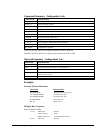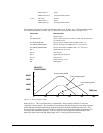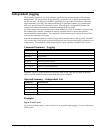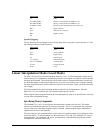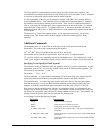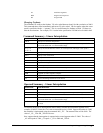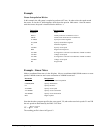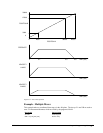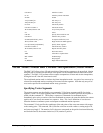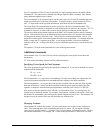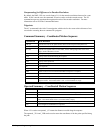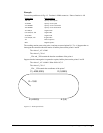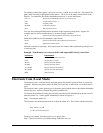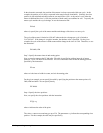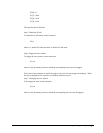
78 • Chapter 6 Programming Motion DMC-3425
COUNT=0 Initialize Counter
N=10 Initialize position increment
#LOOP LOOP
VA [COUNT]=N Fill Array VA
VB [COUNT]=N Fill Array VB
N=N+10 Increment position
COUNT=COUNT+1 Increment counter
JP #LOOP,COUNT<750 Loop if array not full
#A Label
LM AB Specify linear mode for AB
COUNT=0 Initialize array counter
#LOOP2;JP#LOOP2,_LM=0 If sequence buffer full, wait
JS#C,COUNT=500 Begin motion on 500th segment
LI VA[COUNT],VB[COUNT] Specify linear segment
COUNT=COUNT+1 Increment array counter
JP #LOOP2,COUNT<750 Repeat until array done
LE End Linear Move
AMS After Move sequence done
MG "DONE" Send Message
EN End program
#C;BGS;EN Begin Motion Subroutine
Vector Mode: Linear and Circular Interpolation (Local Mode)
The DMC-3425 allows a long 2-D path consisting of linear and arc segments to be prescribed. Motion
along the path is continuous at the chosen vector speed even at transitions between linear and circular
segments. The DMC-3425 performs all the complex computations of linear and circular interpolation,
freeing the host PC from this time intensive task.
The coordinated motion mode is similar to the linear interpolation mode. Any pair of two axes may be
selected for coordinated motion consisting of linear and circular segments. Note that only one pair of
axes can be specified for coordinated motion at any given time.
Specifying Vector Segments
The motion segments are described by two commands; VP for linear segments and CR for circular
segments. Once a set of linear segments and/or circular segments have been specified, the sequence is
ended with the command VE. This defines a sequence of commands for coordinated motion.
Immediately prior to the execution of the first coordinated movement, the controller defines the current
position to be zero for all movements in a sequence. Note: This ‘local’ definition of zero does not
affect the absolute coordinate system or subsequent coordinated motion sequences.
The command, VP a,b specifies the coordinates of the end points of the vector movement with respect
to the starting point. The command, CR r,
θ,δ define a circular arc with a radius r, starting angle of θ,
and a traversed angle
δ. The notation for θ is that zero corresponds to the positive horizontal direction,
and for both
θ and δ, the counter-clockwise (CCW) rotation is positive.



